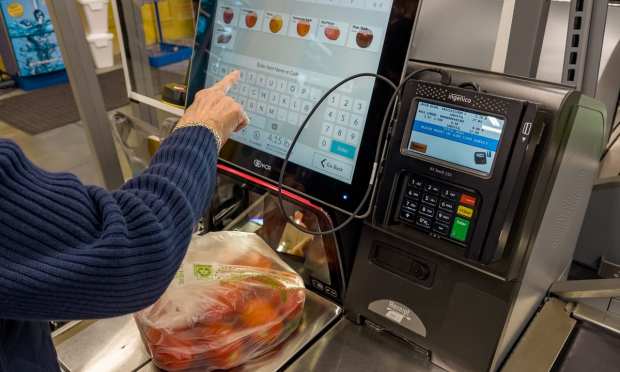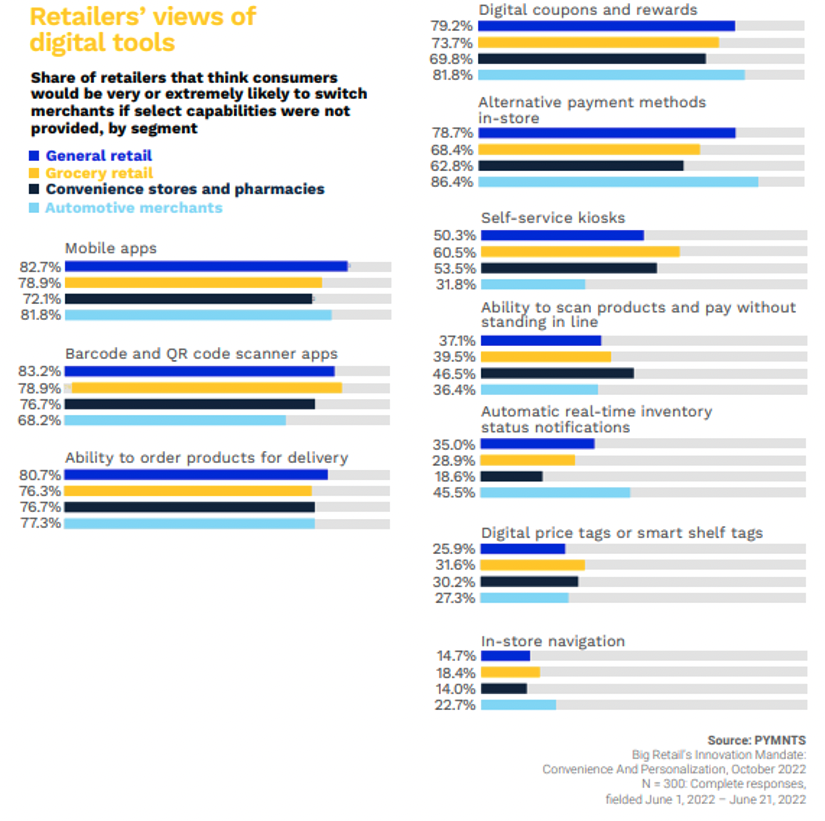AI, Self-Service Models Promise a Re-Imagining of the Grocery Run

That age-old routine of daily life — the grocery run — is getting a makeover thanks to advanced technology, specifically artificial intelligence (AI) and self-service models.
As noted in PYMNTS’ study “Digital-First Banking Tracker® Series Report,” self-service retail is fast becoming a preferred consumer experience in the aisles. The data showed that 84% of consumers in the United States said they enjoy using self-service kiosks, and a full 66% of individuals said they favor self-service models over staffed checkout lanes.
Separate PYMNTS research from earlier in the year showed that 61% of consumers focus more on scanning the items at the register than they do on customer satisfaction. Eighty-five percent of individuals surveyed said that self-service options were, and are, faster than waiting for a cashier.
Self-Checkout Is a Competitive Advantage
And yet, the data showed there’s significant room for self-service kiosks to be more fully cemented in the grocery stores. Only about 38% of U.S. grocery lanes were self-checkout. There is growing recognition by grocers that they need to provide a broad range of technologies to create a personalized, self-service environment in stores. Consider the fact that, as detailed in “Big Retail’s Innovation Mandate: Convenience and Personalization,” PYMNTS and ACI Worldwide found that a majority of grocers — more than 60% — said consumers might take their shopping elsewhere if they did not offer self-service kiosks.
Nearly 80% said the same about bar code and scanner apps. Drill down a bit, and a significant percentage of grocers noted that real-time inventory updates and in-store navigation tools would be competitive advantages.
 The stage is set, then, for a convergence of all those tools in the grocers’ aisles, although it must be noted that there is no one-size-fits-all approach. Some of the most sizable names in the grocery industry are choosing not to take on self-checkout in stores, including Trader Joe’s.
The stage is set, then, for a convergence of all those tools in the grocers’ aisles, although it must be noted that there is no one-size-fits-all approach. Some of the most sizable names in the grocery industry are choosing not to take on self-checkout in stores, including Trader Joe’s.
But elsewhere, the examination of and use of AI to better manage inventory and advertise to clients as they navigate their carts around the store is going to grow by leaps and bounds. Grocers’ use of AI, according to some estimates, is poised to grow by 400% in the next two years.
Kroger detailed in June that AI-driven targeted coupons have helped drive digital engagement. Walmart is a bellwether here, given the fact that the company has an estimated 18% of the overall spend in the U.S. on food and beverage.
And self-service looms large on Walmart’s tech-driven roadmap.
Walmart CEO Doug McMillon said on the company’s most recent earnings call that “having … data go to work with our own large language models and using large language models from others presents a tremendous opportunity.”
His comments follow June comments from Walmart Executive Vice President and Chief People Officer Donna Morris that the company has “long talked about the need for self-service.”
“Most individuals just want to find things on their own,” she added at the time. “They don’t want to call someone. They want to find it. And so, in a world of gen AI, it’s opening up the opportunity for individuals to self-serve.”

